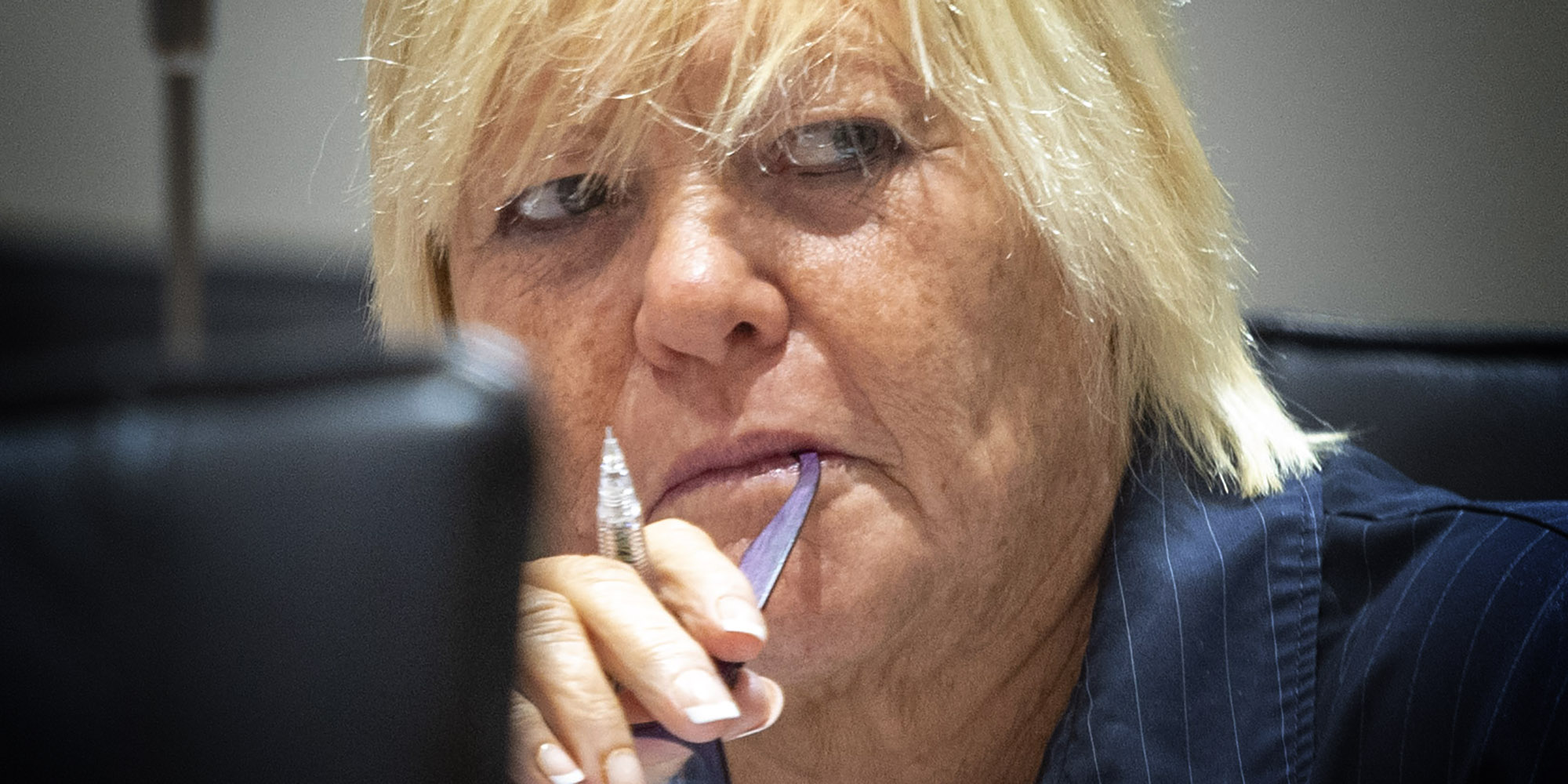DA MP Glynnis Breytenbach focused on ways to aid South Africa’s justice system when she addressed the Cape Town Press Club on “the shortfalls in our justice system” on Wednesday.
Before turning to the solutions, Breytenbach berated Police Minister Bheki Cele and Justice Minister Ronald Lamola for the shortcomings in the South African Police Service and the Department of Justice, specifically in relation to the Thabo Bester saga.
“Bheki Cele is a disgrace – he should resign. If he had one ounce of integrity – which he clearly doesn’t – he would do so,” she chided.
Breytenbach spoke days after footage went viral on social media of members of the SAPS protection detail of Deputy President Paul Mashatile viciously assaulting motorists on a Gauteng highway.
Read more in Daily Maverick: Paul Mashatile VIP assault highlights police protection an expensive excuse for thuggery and vanity
While the viral video has caused public outrage, Cele has remained silent about the incident.
For the better part of her presentation, Breytenbach focused on solutions for SA’s shambolic justice sector.
“So, what do we do? It’s no good knowing that there are these problems – we need to, in my view, move the NPA [National Prosecuting Authority], SAPS and the DoJ [Department of Justice]… into the 21st century,” she said.
- Deal with the backlog of cases
Among the host of issues that the NPA needs to tackle is the backlog of cases, which “grows every day”, Breytenbach said.
South Africa’s criminal case backlog has been pinned on reasons including load shedding, broken equipment and a shortage of courtrooms. The backlog of cases is particularly egregious in cases of gender-based violence, where survivors often wait for years to see perpetrators brought to justice.
The continually growing backlog of cases poses a threat to the justice system, Breytenbach said.
- Adequately resourced institutions
“We need resources if we want the criminal justice system to work,” Breytenbach said.
Institutions including the police and the NPA – which has been operating under a severe lack of resources and capacity – need to be properly resourced, she said. This included training and expertise development of prosecutors, as well as incentives.
“This isn’t happening. I know you want to see people going to jail, but the NPA does not have the capability of doing it. They have lack of experience, they have lack of resources and a very, very serious lack of money to do their job,” Breytenbach said.
Delivering his Budget Vote speech in May, Lamola said the DoJ had a budget of R23.2-billion for the 2023/24 financial year, a slight increase from last year. The NPA has been allocated R5.4-billion for the 2023/24 financial year, the SAPS will receive R102.137-billion, and the Independent Police Investigative Directorate will receive R357-million.
Read more in Daily Maverick: Funding boost for NPA, SIU, SAPS and courts, Ramaphosa announces in delayed address
On Wednesday, Breytenbach said that the budget and resource allocation were not enough.
“In my view, the resource allocation needs to be changed quite considerably. Adequate resources need to be sent to NPA, SAPS and the Department of Justice and Correctional Services. Money – they need money. And we need to make sure the money is spent wisely.”
She said many South Africans continued to experience “limited access to legal representation.” To tackle this, institutions like Legal Aid SA must be adequately resourced.
- The role of restorative justice
Breytenbach said there needed to be more of a focus on restorative justice to deal with South Africa’s high levels of violence.
International and national research has shown that restorative justice is effective in tackling relational harm between victims and offenders, and in reducing the likelihood of reoffending.
Read more in Daily Maverick: Why the release of 19,000 prisoners is a good thing
Breytenbach said there were several good examples of how restorative justice had worked in other countries, which South Africa could “duplicate”.
“Going to prison for 100 years can’t be the solution to every problem.”
South Africa has strayed from placing restorative justice and rehabilitation at the centre of its prisons. “Our prisons do not rehabilitate anybody,” Breytenbach said.
- Improving forensic testing and research technology
Part of strengthening our justice system is “improving our forensic capabilities” Breytenbach said.
When delivering his Budget Vote speech in May, Cele revealed that the DNA testing backlog was 241,152 cases in the first quarter of the 2021/22 financial year. He claimed the backlog had dropped to 636 – a 99.7% reduction.
However, Breytenbach said the figures he was presenting “are a little bit skewed” and maintained that there was still a backlog in forensic testing.
Additionally, she said that information systems within the justice system had to be improved so that criminal justice stakeholders did not carry out their work in silos.
“We need to improve our research technology. The systems don’t talk to each other,” she said. “There’s no meshing of information between institutions like the SAPS and the NPA.”
- Adequate support for victims of crime
Breytenbach said another way to improve the justice system was by providing adequate support for victims.
“When they get into the witness box, they are ripped apart. There is very little support in terms of financial support, emotional support [and] psychological support for victims,” she said.
- Community engagement
There needed to be more community engagement when it comes to crime and policing, Breytenbach said.
“We all live in big houses behind high walls, but there is very little community engagement on the causes of crime,” she said. DM




